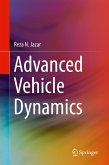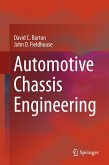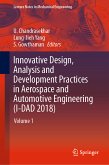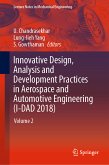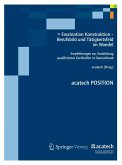This book examines the driving dynamics of harvesting machines with large harvesting heads. It looks at how to efficiently use these machines. The author explores a common problem that hinders machine performance when harvesting with very large headers. He deals with concepts for reducing the undesired effects of vehicle dynamics when using these machines.
With the steadily increasing capacity of harvesting machines, the working widths of the harvesting heads get wider and the headers get heavier. It has become essential with these giant headers to use header height sensors and header control systems to avoid the headers from being run into the ground when encountering elevation changes in the terrain. A fundamental limitation of the viable speed of header height adjustments arises from the combination of the wider and heavier headers with soft agricultural tires.
The current solution to find an appropriate speed of header height adjustments is to perform a header calibration whenever a new header is attached to the machine and to endow the machine operator with the capability to tweak the speed of adjustments manually. The result of an inappropriate speed of height adjustments is a reduction in overall productivity and an under-utilization of the harvesting machine. The author looks at ways to prevent this. He offers detailed modeling of the vertical dynamics including dynamic wheel loads. In addition, the book contains results from simulations and machine tests.
The Author
Dr.-Ing. Benedikt Jung studied Mechanical Engineering and Automotive Systems Engineering with a focus on Automation and Turbomachinery. Between 2014 and 2018 he was an external PhD student at the Institute of Agricultural Systems at the Technical University of Dresden. Since 2011, he works in the Research and Development department of a global manufacturer of Agricultural machinery.Dieser Download kann aus rechtlichen Gründen nur mit Rechnungsadresse in A, B, BG, CY, CZ, D, DK, EW, E, FIN, F, GR, HR, H, IRL, I, LT, L, LR, M, NL, PL, P, R, S, SLO, SK ausgeliefert werden.
Hinweis: Dieser Artikel kann nur an eine deutsche Lieferadresse ausgeliefert werden.
Es gelten unsere Allgemeinen Geschäftsbedingungen: www.buecher.de/agb
Impressum
www.buecher.de ist ein Internetauftritt der buecher.de internetstores GmbH
Geschäftsführung: Monica Sawhney | Roland Kölbl | Günter Hilger
Sitz der Gesellschaft: Batheyer Straße 115 - 117, 58099 Hagen
Postanschrift: Bürgermeister-Wegele-Str. 12, 86167 Augsburg
Amtsgericht Hagen HRB 13257
Steuernummer: 321/5800/1497
USt-IdNr: DE450055826
Bitte wählen Sie Ihr Anliegen aus.
Rechnungen
Retourenschein anfordern
Bestellstatus
Storno



